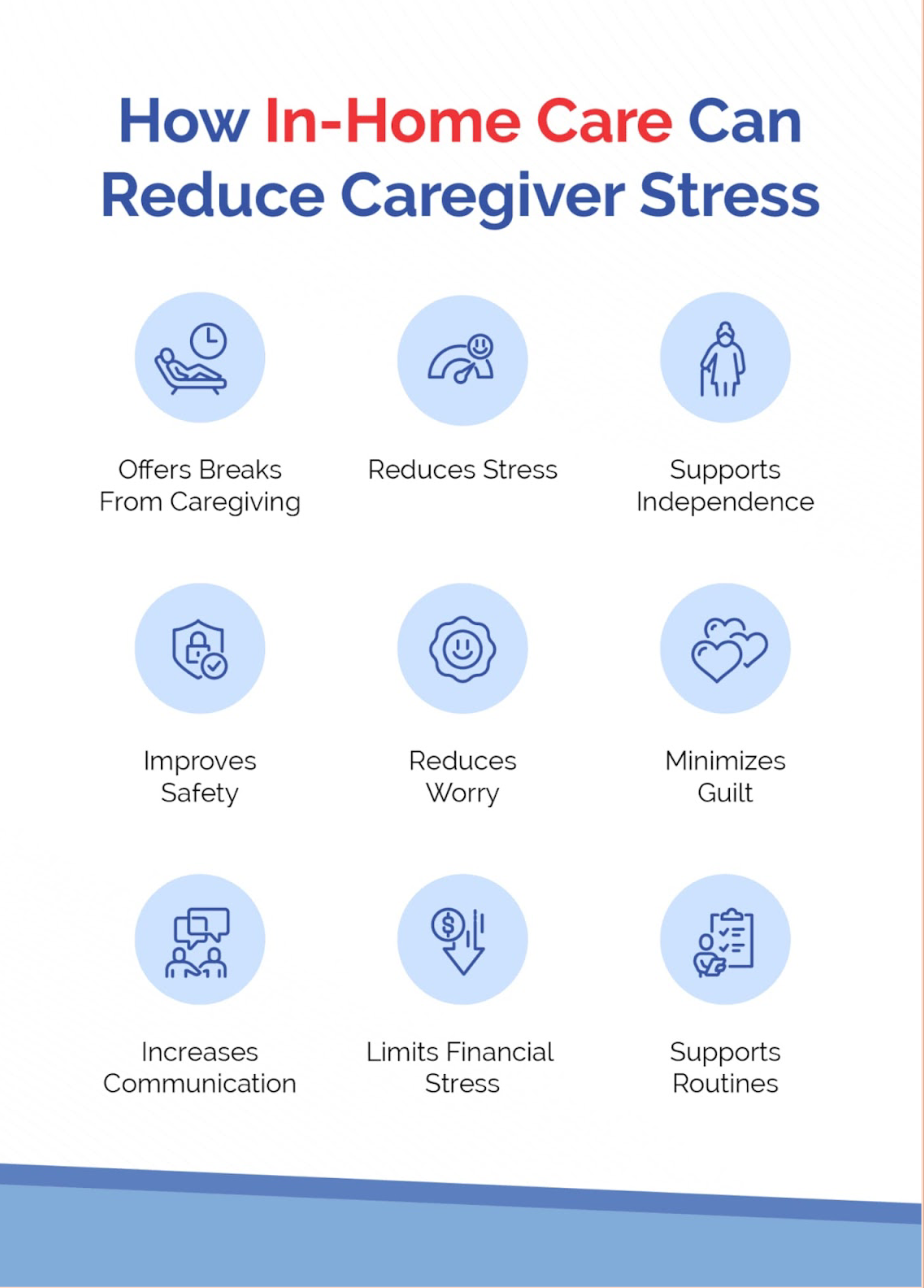
Understanding the Challenges of Family Caregiving and the Role of In-Home Care Services
Caring for aging loved ones at home represents both a profound commitment and a considerable responsibility for many families. A complex landscape of caregiving demands emerges for those who are also navigating work obligations and family life. Over time, this emotional and physical burden can lead to caregiver burnout, adversely affecting both the caregiver and the care recipient.
According to a report from the American Association of Retired Persons (AARP), approximately 38 million Americans provide unpaid care to adult family members and friends. While many undertake this role out of love and duty, the challenges associated with caregiving can accumulate, leading to significant stress. Common stressors experienced by caregivers include sleep deprivation caused by nighttime responsibilities, the physical demands of lifting or providing mobility support, and the emotional toll of managing complex family dynamics or cognitive decline associated with conditions like dementia.
Moreover, financial pressures can mount, particularly when caregiving responsibilities interfere with employment. The cumulative effect of these factors can lead to burnout, which is characterized by chronic fatigue, irritability, anxiety, and depression. It is crucial for caregivers to recognize these signs and seek support, as unmanaged stress can ultimately compromise the quality of care provided.
The Benefits of In-Home Care Services
In-home care services offer a practical solution to alleviate some of these pressures. By providing essential assistance with daily activities, these services not only ensure that loved ones receive the care they need but also allow family members to reclaim their time and mental health.
Key services offered in professional in-home care may include personal assistance with bathing and grooming, medication management, meal preparation, and companionship. This level of support allows family caregivers the flexibility to schedule assistance according to their family’s needs, enabling them to focus on self-care or other responsibilities.
Particularly beneficial is the concept of respite care, which is designed to provide caregivers with temporary relief, helping them recharge physically and emotionally. Organizations like Visiting Angels offer tailored services to meet the specific needs of clients, ensuring that their loved ones receive dignified and compassionate care.
Recognizing the Need for Help
Understanding when to seek professional assistance can be challenging, especially for those invested in caregiving. It’s essential for caregivers to stay attuned to their own health and emotional well-being. Indicators that it may be time to consider in-home care can include persistent exhaustion, the feeling of being overwhelmed by caregiving tasks, increased irritability or guilt, and concerns about managing complicated care needs.
It is important to reframe the decision to seek help as a strategic move rather than a failure. In fact, utilizing professional services fosters stronger relationships, as caregivers are able to engage with their loved ones on an emotional level rather than merely through a lens of obligation.
Conclusion: Sharing the Caregiving Journey
Family caregivers play a crucial role in enabling seniors to live independently in their homes. However, the emotional and physical toll can be significant. By opting for in-home care services, families can strike a balance that preserves both the health of the caregiver and the dignity of the care recipient.
In-home care not only enhances the quality of life for seniors but also allows caregivers the necessary space to recharge, ultimately improving family dynamics and emotional health. By sharing the caregiving responsibility, families can joyfully navigate the complexities of aging while maintaining meaningful connections with their loved ones.

